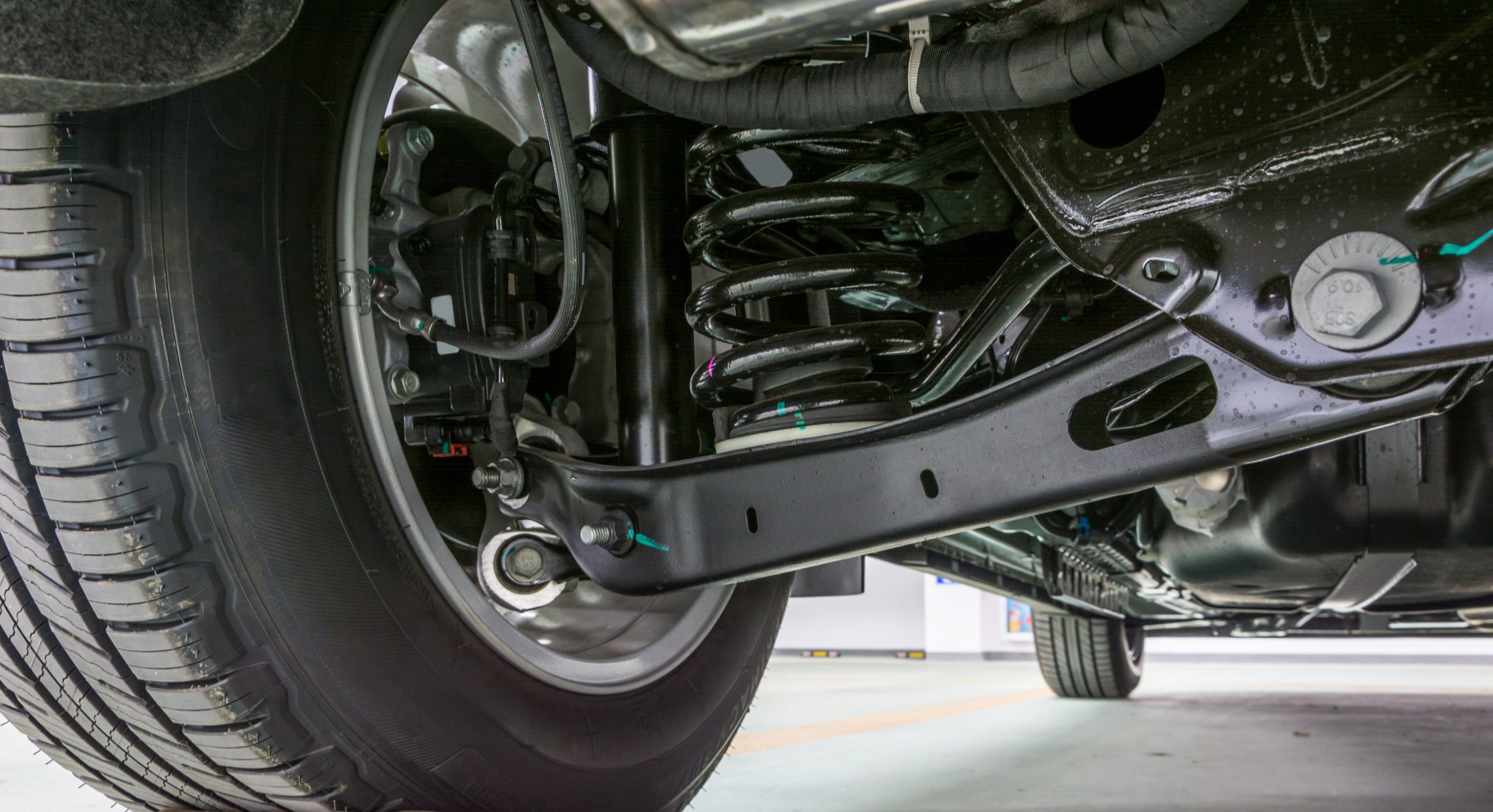Most drivers rarely consider how important their vehicle’s suspension system is for their driving comfort and safety. The suspension provides support to the weight of your vehicle while maintaining a smooth ride for passengers. A smooth ride is achieved through various cushioning components, including the shock absorbers (shocks) or struts. In this month’s blog, we examine the shocks or struts and some common signs to look for if there are problems with either one.
So, what’s the difference between shocks and struts?
Sometimes drivers use the words shocks and struts synonymously, however, these suspension components are not the same. In fact, your vehicle has either one or the other as part of its suspension system.
What are shocks?
Shock absorbers, or shocks, are hydraulic components attached at each of the vehicle wheels that are designed to damper the kinetic energy and convert it to thermal energy. When you drive over a bump or the road is rough, the shock will release fluid inside the piston and absorb this extra energy coming from the road and the wheels.
What are struts?
Struts have a similar purpose as shock; however, they are a structural part of the suspension system. Because the strut is part of the suspension, the strut assembly serves another purpose to help support the weight of the vehicle. The struts support the vehicle’s springs too, which help to keep wheels in alignment.
What can go wrong with shocks or struts?
Shocks and struts are specifically designed to withstand a beating from the road to protect the vehicle and its occupants. But that does not mean that shocks or struts are invincible. These components are victim to wear, tear, leaks, and damage like every other vehicle component.
The good news is that when your shocks or struts fail, you will notice some tell-tale signs.
- A typical sign you may experience is unusual noises from your vehicle. You may hear knocking or squeaks as you drive over bumps on areas of the road that are not as smooth.
- You may experience vibrations while driving that impact the entire vehicle.
- Your tire treads may wear down in an uneven manner.
- Many times, your vehicle may nose-dive (pull forward) when braking or may bounce or rock during handling.
Issues affecting your shocks or struts will influence your overall driving performance and handling of the vehicle on the road. This can sometimes lead to safety concerns, so they should be addressed when signs begin to surface.
How can you maintain your shocks or struts?
There are ways to minimize the potential for damage or wear on your shocks or struts. A big part of maintenance is how you drive. Paying attention to road hazards like bumps or potholes and reducing speed while driving through these hazards, can help to mitigate the potential for damage.
You can also have periodic maintenance done on your suspension system that will keep it working more effectively. This maintenance may include:
- Tire rotations
- Lubrications of suspension parts
- Having an inspection done for fluid leaks
- Eventual replacement, but shocks or struts do not need to be replaced as often in the lifecycle of your vehicle. The average timeframe is about 50,000 miles driven.
If you suspect a problem with your shocks, struts, or your suspension system, get in touch with us at Best Western Transmissions. Our service professionals can inspect your vehicle and make recommendations for repairs or replacement.

